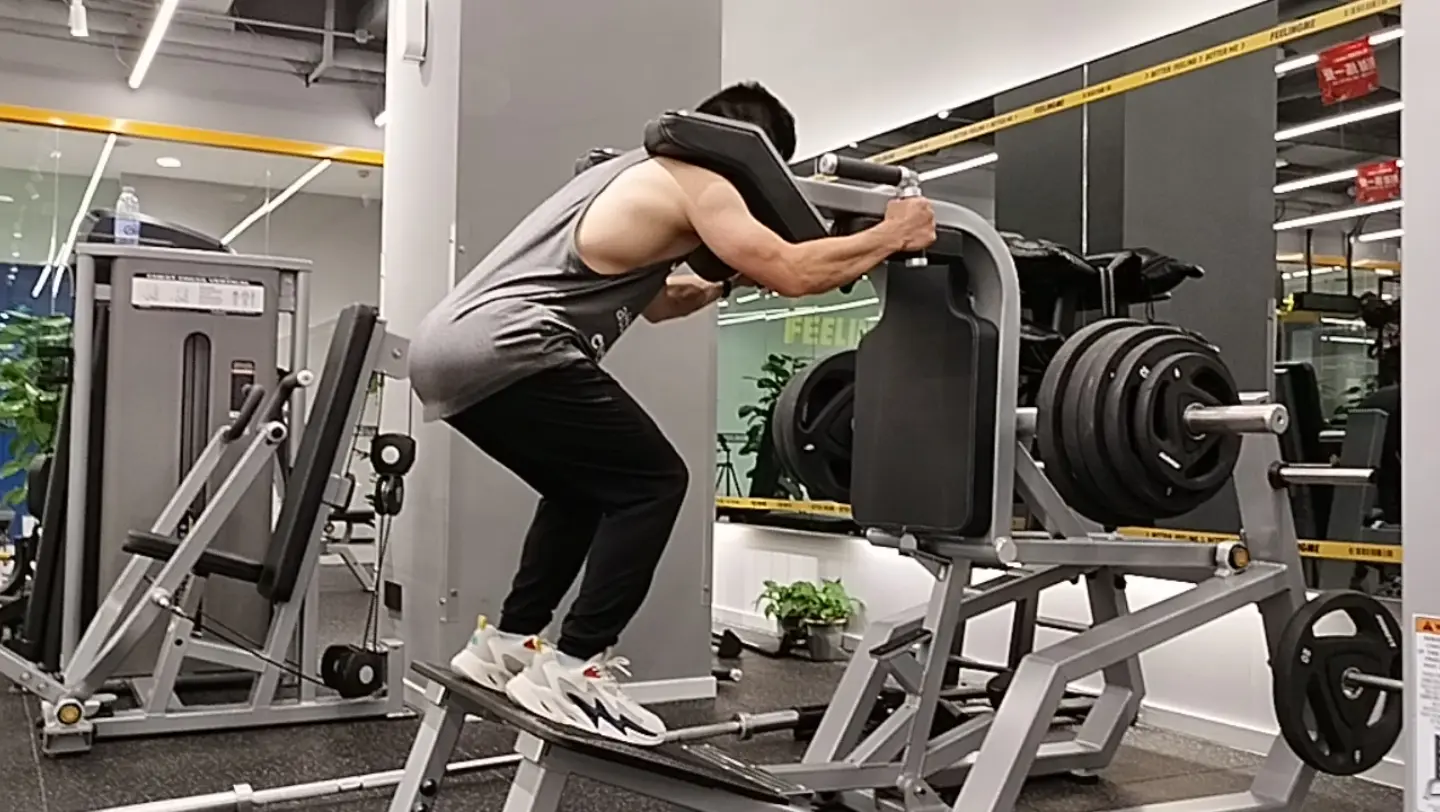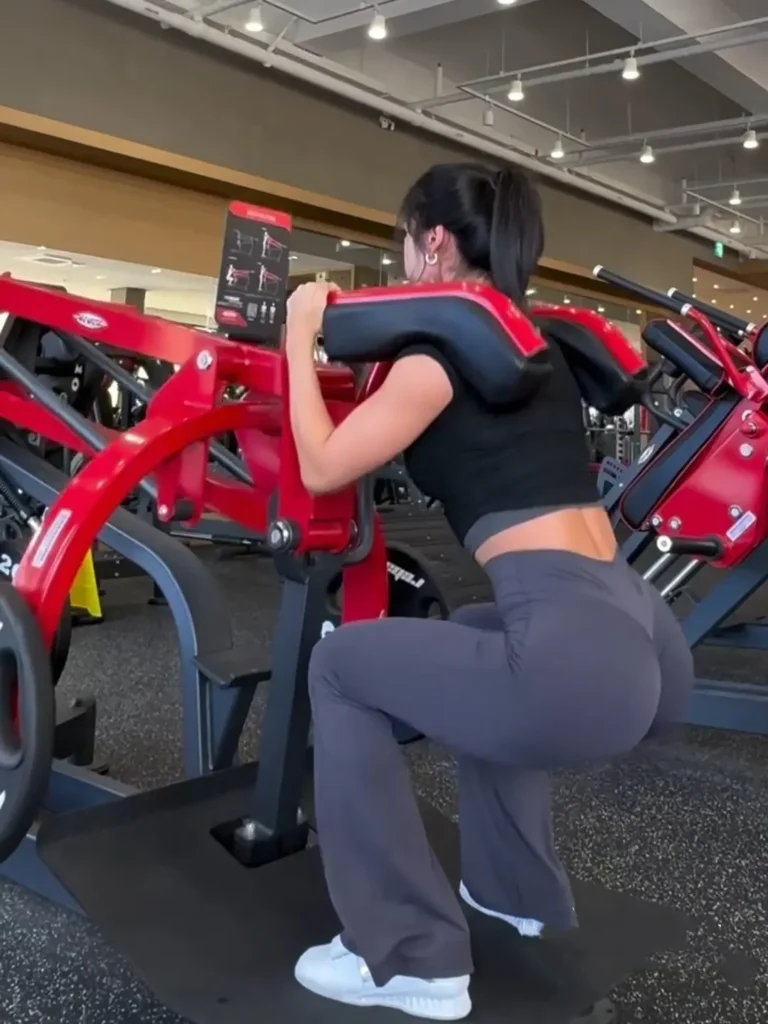How To Master The Hack Squat For Stronger Legs
Why do you need the Hack Squat?
If you often feel a lack of leg strength, whether it’s running, jumping, or everyday activities, weak legs can be a bottleneck for you. Traditional deep squats, while effective, are not easy to master for many people, especially those with knee or low back problems.
The Hack Squat, as a stationary equipment training movement, not only works the leg muscles effectively but also reduces the risk of injury, making it ideal for both beginners and advanced gym-goers.
Basic Steps: Mastering the Hack Squat from Scratch
1.Adjusting the Position of the Machine
Before you start, adjust the pedal position and angle of the backrest of the Hack Squat machine according to your height and body proportions, making sure that your back can be tightly pressed against the cushion, and that your feet are shoulder-width apart, with toes pointing slightly outward.
2.Correct Standing Posture and Grip
Place your back against the back cushion of the machine, place your shoulders under the shoulder pads, step on the pedals with both feet, and hold the handles with both hands on both sides to maintain stability.

3.Breath Control and Core
Before squatting, take a deep breath and tighten your core muscles to keep your spine in a neutral position and avoid excessive forward or backward leaning of the lower back.
4.Slow Squatting
Bend your knees and slowly squat down until the angle between your thighs and calves is slightly less than 90 degrees, taking care that your knees don’t go over your toes, and keep your heels close to the pedals.
5.Stable Rise
Power through your heels and slowly rise until your legs are fully extended, but don’t lock out your knees to maintain constant muscle tension.
Advanced Tips: Optimizing Your Hack Squat
1.Adjust Foot Position
Place your feet above the pedals if you want to work the glutes more, or below the pedals if you want to work the quads more.
2.Increase the Weight
Gradually increase the weight as you become more skilled, adding 5-10 pounds at a time to ensure that the muscles are consistently challenged.
3.Vary the Tempo of the Movement
Try staying at the lowest point of the squat for 2-3 seconds to increase the duration of eccentric contraction of the muscle, thereby stimulating muscle growth more effectively.
4.Reverse Hack Squat
The reverse Hack Squat provides better activation of the gluteal muscle groups. Stand facing the machine with your shoulders under the shoulder pads and squat with your hips pushed back to feel the stretch in your glutes.

5.Combination Training Program
Combine the Hack Squat with other leg training movements (e.g., leg curls, lunges) to create a comprehensive leg training program, training 2-3 times per week.
Common Mistakes and Solutions
Mistake 1: Knees Over Toes
This can increase stress on the knees and lead to injury risk. The solution is to keep your heels close to the pedals and your knees aligned with your toes.
Mistake 2: Squatting Too Deep or Not Deep Enough
Squatting too deep may lead to pelvic roll and increase the pressure on the low back; squatting not deep enough will not stimulate the muscles sufficiently. It is recommended to squat until the angle between the thigh and calf is slightly less than 90 degrees.
Mistake 3: Neglecting Core Tightness
Relaxation of the core muscles can lead to spinal instability and increase the risk of injury. Always keep the core tight and the spine neutral.
Example Training Program
- Warm-up: 5 minutes of dynamic stretching, including leg swings and hip rotations.
- Hack Squats: 4 sets of 10-12 reps each, gradually increasing the weight.
- Leg Curls: 3 sets of 12-15 reps each, focusing on hamstrings.
- Reverse Hack Squats: 3 sets of 10 reps each to strengthen the glutes.
- Calf Raises: 3 sets of 15-20 reps each to complete the leg workout.
Advice for Success
- Maintain consistency: perform leg workouts at least 2 times per week, gradually increasing the intensity.
- Listen to your body: If you feel discomfort, adjust your position or reduce the weight immediately.
- Record progress: Use a training log to record weights and repetitions each time to motivate yourself.
Fitness trainer Andy Vincent points out that the stability of the Hack Squat makes it ideal for working the leg muscle groups. Compared to traditional squats, the Hack Squat allows for a deeper squat range, which in turn stimulates muscle growth more effectively.
In addition, studies have shown that the Hack Squat is effective in activating the glutes and quadriceps, making it suitable for beginners and advanced exercisers alike!


